Litter trays – the dos, don’ts and whys.
A litter tray is an essential item to have if you own a cat, especially one that lives indoors. However, if something is amiss with their litter tray, your feline friend may decide to use a different area to relieve themselves.
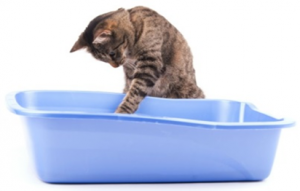
Size is everything!
The cat’s litter tray should be at least one a half times the length of the cat (excluding the tail) for them to be able to use it comfortably.
Most litter trays sold in pet shops are too small for the average adult cat. A good alternative would be a plastic storage box with the lid removed. Each individual cat will have a preference on whether they prefer a hooded tray or not. If choosing a tray with a hood make sure they have enough head room to stand up fully. The litter should be a depth of approx. 3cm, so they are able to comfortably dig and follow their natural instincts to bury their waste.
Types of litter

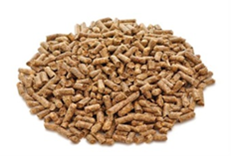

There are lots of different types of cat litter available and which one your cat prefers is up to them. However, consideration should be made on the amount of dust, whether it is clumping or non-clumping and the texture of the substrate. A rough, course texture found with some gravels may be uncomfortable on delicate toe beans and therefore be off-putting. A light flaky substrate may get caught up in the cat’s fur.
Once the cat has established which type of litter they prefer it’s important to try and stick to this type. Some cats don’t like change and this may lead to house soiling.
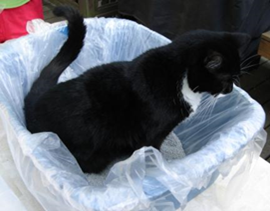
Avoid using any sort of liner for the cat’s tray. Although these may be convenient for us to use whilst we are cleaning the tray, they can easily become caught in the cat’s claw whilst they are burying their waste. Your cat may then decide to find a less irritating place to toilet. Other tray deterrents for your cat can include fragranced litter or added perfumed granules that mask unpleasant smells. Although these may smell pleasant to us they can be overwhelming to the cat’s sensitive nose.
Location, Location, Location!
Cats, like us, need privacy when they use the toilet. The litter tray should be positioned in an area where there is limited household traffic which may disturb or frighten them. It should also be away from windows and doors where they may feel threatened whilst they are so vulnerable.
Litter trays should also be placed away from other resources such as their food, water and beds. This is because cats are fastidiously clean animals and like to keep everything separate.
If the litter tray isn’t located in a suitable position your cat may choose to relieve themselves somewhere more appropriate for them.
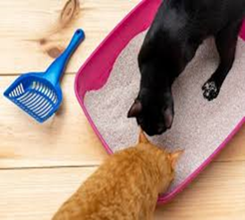 I have more than one cat
I have more than one cat
If you have multiple cats in the house the golden rule is to have one litter tray per cat plus a spare.
Litter trays should be in different areas of your home so that they are far enough apart. Cats may view litter trays that are too close together as one latrine site and this may be problematic if one cat resource guards.
Keep it clean!
Remove all solid waste, including urine clumps, at least once a day.
The litter tray should be fully emptied and washed out every one to three weeks. This is dependent on the amount and type of litter, the amount of cats that use the tray and the type of bowel movements.
The tray should be cleaned with an unscented cleaner (washing up liquid is fine) and rinsed thoroughly.
Avoid disinfectants that contain phenol, such as Dettol, as this is toxic to cats.
If your cat is urinating in inappropriate places in your home, please don’t forget to consult your vet. Some medical reasons, including pain, may make your cat urinate inappropriately. W
e must rule this out before any behavioural modification.
By Kayleigh Harris RVN certFN
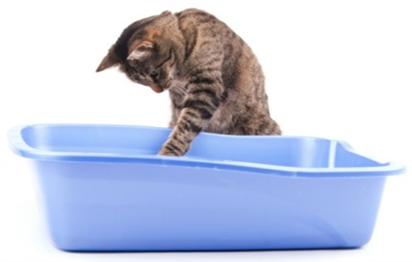



 There are lots of different types of cat litter available and which one your cat prefers is up to them. However, consideration should be made on the amount of dust, whether it is clumping or non-clumping and the texture of the substrate. A rough, course texture found with some gravels may be uncomfortable on delicate toe beans and therefore be off-putting. A light flaky substrate may get caught up in the cat’s fur.
Once the cat has established which type of litter they prefer it’s important to try and stick to this type. Some cats don’t like change and this may lead to house soiling.
There are lots of different types of cat litter available and which one your cat prefers is up to them. However, consideration should be made on the amount of dust, whether it is clumping or non-clumping and the texture of the substrate. A rough, course texture found with some gravels may be uncomfortable on delicate toe beans and therefore be off-putting. A light flaky substrate may get caught up in the cat’s fur.
Once the cat has established which type of litter they prefer it’s important to try and stick to this type. Some cats don’t like change and this may lead to house soiling.
 Avoid using any sort of liner for the cat’s tray. Although these may be convenient for us to use whilst we are cleaning the tray, they can easily become caught in the cat’s claw whilst they are burying their waste. Your cat may then decide to find a less irritating place to toilet. Other tray deterrents for your cat can include fragranced litter or added perfumed granules that mask unpleasant smells. Although these may smell pleasant to us they can be overwhelming to the cat’s sensitive nose.
Location, Location, Location!
Cats, like us, need privacy when they use the toilet. The litter tray should be positioned in an area where there is limited household traffic which may disturb or frighten them. It should also be away from windows and doors where they may feel threatened whilst they are so vulnerable.
Litter trays should also be placed away from other resources such as their food, water and beds. This is because cats are fastidiously clean animals and like to keep everything separate.
If the litter tray isn’t located in a suitable position your cat may choose to relieve themselves somewhere more appropriate for them.
Avoid using any sort of liner for the cat’s tray. Although these may be convenient for us to use whilst we are cleaning the tray, they can easily become caught in the cat’s claw whilst they are burying their waste. Your cat may then decide to find a less irritating place to toilet. Other tray deterrents for your cat can include fragranced litter or added perfumed granules that mask unpleasant smells. Although these may smell pleasant to us they can be overwhelming to the cat’s sensitive nose.
Location, Location, Location!
Cats, like us, need privacy when they use the toilet. The litter tray should be positioned in an area where there is limited household traffic which may disturb or frighten them. It should also be away from windows and doors where they may feel threatened whilst they are so vulnerable.
Litter trays should also be placed away from other resources such as their food, water and beds. This is because cats are fastidiously clean animals and like to keep everything separate.
If the litter tray isn’t located in a suitable position your cat may choose to relieve themselves somewhere more appropriate for them.
 I have more than one cat
If you have multiple cats in the house the golden rule is to have one litter tray per cat plus a spare.
Litter trays should be in different areas of your home so that they are far enough apart. Cats may view litter trays that are too close together as one latrine site and this may be problematic if one cat resource guards.
Keep it clean!
Remove all solid waste, including urine clumps, at least once a day.
The litter tray should be fully emptied and washed out every one to three weeks. This is dependent on the amount and type of litter, the amount of cats that use the tray and the type of bowel movements.
The tray should be cleaned with an unscented cleaner (washing up liquid is fine) and rinsed thoroughly.
Avoid disinfectants that contain phenol, such as Dettol, as this is toxic to cats.
If your cat is urinating in inappropriate places in your home, please don’t forget to consult your vet. Some medical reasons, including pain, may make your cat urinate inappropriately. We must rule this out before any behavioural modification.
By Kayleigh Harris RVN certFN
I have more than one cat
If you have multiple cats in the house the golden rule is to have one litter tray per cat plus a spare.
Litter trays should be in different areas of your home so that they are far enough apart. Cats may view litter trays that are too close together as one latrine site and this may be problematic if one cat resource guards.
Keep it clean!
Remove all solid waste, including urine clumps, at least once a day.
The litter tray should be fully emptied and washed out every one to three weeks. This is dependent on the amount and type of litter, the amount of cats that use the tray and the type of bowel movements.
The tray should be cleaned with an unscented cleaner (washing up liquid is fine) and rinsed thoroughly.
Avoid disinfectants that contain phenol, such as Dettol, as this is toxic to cats.
If your cat is urinating in inappropriate places in your home, please don’t forget to consult your vet. Some medical reasons, including pain, may make your cat urinate inappropriately. We must rule this out before any behavioural modification.
By Kayleigh Harris RVN certFN

